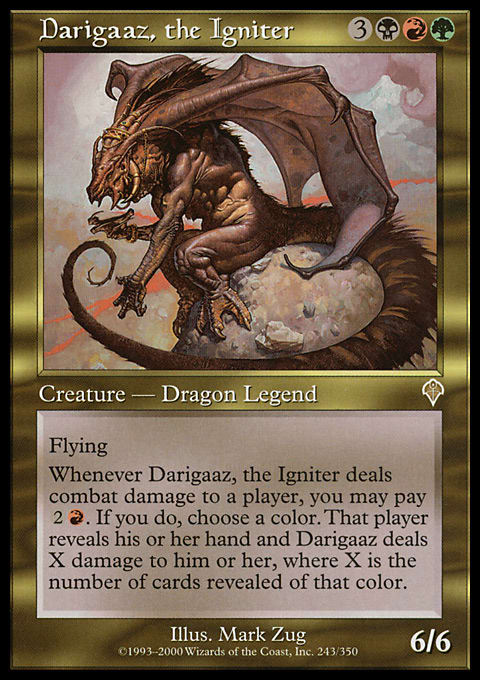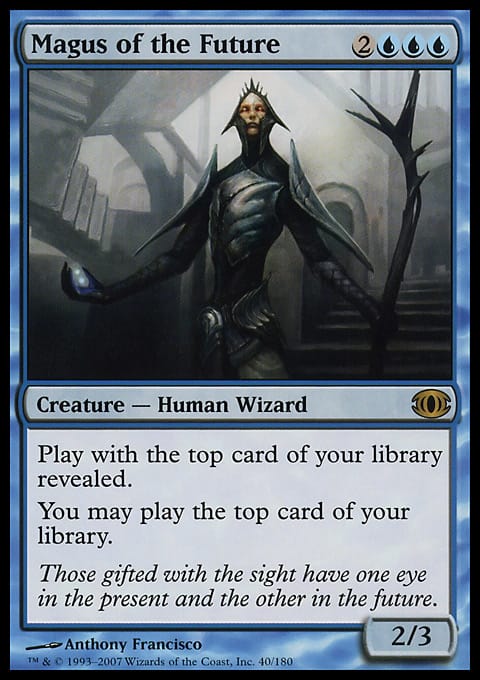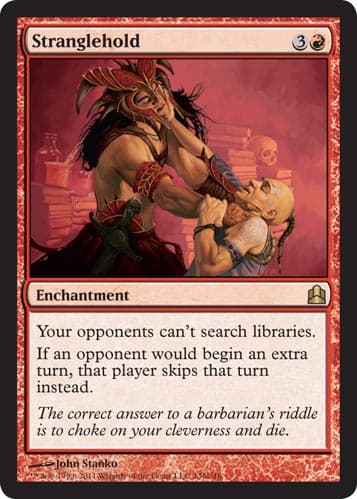It was the writing of others that got me into playing the Cube Draft format back in 2010. Adam Styborski’s article on “The Stack ” combined with Evan Erwin’s CubeDrafting.com sent me down a Magic rabbit trail I’m thrilled to still be traveling. At the time, I didn’t know anyone who played this format. I had only blog posts and articles to get me going. Over three years later, I realize that if it hadn’t been for their writing, I wouldn’t be enjoying Magic today as much as I am. I certainly wouldn’t have designed a Pauper Cube or co-created a “Cube of Doom”.
I’m convinced that the Cube Draft format will continue to grow only if we keep talking about it, sharing ideas, and sharing stories. In that spirit, I recently had the privilege of interviewing a few active Cube Draft advocates: Evan Erwin, Matt “Kranny” Kranstruber, and Chris Keuhl. I asked each of them the same questions and have posted their answers below. You’ll notice some real differences in their responses. I think this is good. It reflects that the Cube Draft format is still in the refining stage: an exciting place to be. I’m glad to be involved, and I hope you will be, too (if you’re not already).
I’ve included bios for Evan, Kranny, and Chris at the bottom of the post for those unfamiliar with them. For now, let’s jump right into the questions . . .
What's the one thing you wish you knew when you started building your Cube?
 Evan: That double-sleeving is worth it and that lands are the number-one thing you can easily collect over the years.
Evan: That double-sleeving is worth it and that lands are the number-one thing you can easily collect over the years.
The first part is just realizing that your Cube is an investment. One day, I'm positive my Cube will buy me a new car. It's well past used-car status now; I mean, my foil Jace I purchased for $90 when it was released is worth over $800 now! That's insane. The growth of good Magic cards is steady and constant, beating the stock market every single year. I pour thousands into my Cube each year, but it pays back in dividends (and fun!)
As for the latter, collect every cool land you like. They only go up in value. Beta lands, for example, will be usable (and valuable) forever, and so will Unhinged, Unglued, Zendikar lands, etc. Euro, APAC, the alphabet soup of high land value. Get those lands early and often. Trade for them as throw-ins; you'll be glad you did.

 Kranny: I was fortunate enough to be introduced to cubing right before the format exploded. There were very few resources aside from the accepted “best” lists. Part of what made my foray into cubing so interesting was the lack of information available while drafting the first version of my Cube. We couldn’t reach out to other Cube groups, hop on a forum, or read an article. It was all about testing and feeling out the format.
Kranny: I was fortunate enough to be introduced to cubing right before the format exploded. There were very few resources aside from the accepted “best” lists. Part of what made my foray into cubing so interesting was the lack of information available while drafting the first version of my Cube. We couldn’t reach out to other Cube groups, hop on a forum, or read an article. It was all about testing and feeling out the format.
To answer your question, I don’t think there’s any one thing I wish I knew. Having to ask questions and constantly test my list was what made Cube so exciting for me. Other formats are solved as metagames and environments shift. Cube is so fluid and changes so much that even Cube designers with as much information as we have today are still able to go through the same discovery process I did. Asking questions and debating the merits of new ideas is what keeps the Cube format fresh. The idea that there is no best way to build a Cube drives Cube designers to test the limits of what we can do with our format.
 Chris: Proxy and play first. Acquiring cards and not using them sucks.
Chris: Proxy and play first. Acquiring cards and not using them sucks.
How did you start building your Cube? (What cards did you start with? Or what goals did you have in mind?)
 Evan: I read http://www.starcitygames.com/magic/misc/9975_Gleaming_the_Cube.html , built it exactly, and immediately began making changes to it. The rest is history :)
Evan: I read http://www.starcitygames.com/magic/misc/9975_Gleaming_the_Cube.html , built it exactly, and immediately began making changes to it. The rest is history :)
 Kranny: I had a few chances to play Cube early on in its life, but I wasn’t able to appreciate it until years after my first Cube Draft. For me, the light bulb went on after we introduced cubing as a part of our weekly Constructed testing group. A friend had a list he built up modeled after Tom Lapille’s list. We drafted his list for weeks, and it became something I looked forward to every week. I’d purposely show up to testing night without a deck or late in hopes that we could just cube draft.
Kranny: I had a few chances to play Cube early on in its life, but I wasn’t able to appreciate it until years after my first Cube Draft. For me, the light bulb went on after we introduced cubing as a part of our weekly Constructed testing group. A friend had a list he built up modeled after Tom Lapille’s list. We drafted his list for weeks, and it became something I looked forward to every week. I’d purposely show up to testing night without a deck or late in hopes that we could just cube draft.
After a while, I started getting ideas about how I might build a Cube to improve on his list. I saw gaps in his design that I thought I could fix with new sets. I remember my family room after making my first draft. There were cards on the kitchen table, the floor, and the counters, and there was a small spot on the floor with me sitting, madly adding and cutting cards to perfect my first list. I had no real concept of archetype drafting or designing with a particular objective in mind. I just wanted players to get excited about coming to Cube night the same way I got excited. My goal is and always has been to have fun.
 Chris: My first Cube was a stack of one-of cards comprising of the remnants of my Five Color deck (Prismatic online) and solid cards from my binder that we would shuffle up and “draft stack.” Recently, I have tried to recreate Limited environments that I have enjoyed—multicolored messes; atypical card interactions; or playing with cards that have fallen by the wayside. My current project is based on Invasion block. I looked up all of the iconic cards I remembered from drafting the sets and then looked through cards that fit the themes of Invasion block. (This Cube features three unique “packs.”)
Chris: My first Cube was a stack of one-of cards comprising of the remnants of my Five Color deck (Prismatic online) and solid cards from my binder that we would shuffle up and “draft stack.” Recently, I have tried to recreate Limited environments that I have enjoyed—multicolored messes; atypical card interactions; or playing with cards that have fallen by the wayside. My current project is based on Invasion block. I looked up all of the iconic cards I remembered from drafting the sets and then looked through cards that fit the themes of Invasion block. (This Cube features three unique “packs.”)
What's an important piece of advice you would like to pass on to brand new Cube Draft players?
 Evan: Don't take every good card. All the cards are good; that's the point. Focus, and figure out what it is you'd like to do, and then execute. Either through what's coming in the packs ("Man, there sure are a lot of sweet Reanimator cards floating around . . . ") or whether it's what you want to draft ("I'm playing Grixis, and I don't care"), it's about focusing and building a deck.
Evan: Don't take every good card. All the cards are good; that's the point. Focus, and figure out what it is you'd like to do, and then execute. Either through what's coming in the packs ("Man, there sure are a lot of sweet Reanimator cards floating around . . . ") or whether it's what you want to draft ("I'm playing Grixis, and I don't care"), it's about focusing and building a deck.
 Kranny: Be willing to entertain the idea that you’re wrong. Being told that a certain card or strategy is bad can be a tough pill to swallow. Your Cube drafters are your biggest source of data and your most important asset. Without them, you actually have no format at all. Strategy aside, if you ignore them, you have nothing to build for. Listen to them. That doesn’t mean you have to let them impose their ideas on your Cube vision, but as a designer, you need a feedback loop. If you manage a happy Cube group, they will be more likely to believe you actually know what you’re doing, and this will allow you some flexibility to test some more off-the-wall ideas.
Kranny: Be willing to entertain the idea that you’re wrong. Being told that a certain card or strategy is bad can be a tough pill to swallow. Your Cube drafters are your biggest source of data and your most important asset. Without them, you actually have no format at all. Strategy aside, if you ignore them, you have nothing to build for. Listen to them. That doesn’t mean you have to let them impose their ideas on your Cube vision, but as a designer, you need a feedback loop. If you manage a happy Cube group, they will be more likely to believe you actually know what you’re doing, and this will allow you some flexibility to test some more off-the-wall ideas.
 Chris: Talk to people who have been playing with the Cube (or the creator) that you are going to use. Ask to see a card list or to look through the Cube before you draft. A little bit of information goes a long way.
Chris: Talk to people who have been playing with the Cube (or the creator) that you are going to use. Ask to see a card list or to look through the Cube before you draft. A little bit of information goes a long way.
What do you think the future holds for this format? Any hopes and dreams for cubing that you'd like to share?
 Evan: I think the fact that the name “Cube” has stuck around is one win. “EDH” couldn't survive, so it was replaced by “Commander,” but Cube is a unique animal. Also, it's something played at the Players Championship, which is another huge win. I can't imagine the format getting any more love in terms of organized play and MTGO support.
Evan: I think the fact that the name “Cube” has stuck around is one win. “EDH” couldn't survive, so it was replaced by “Commander,” but Cube is a unique animal. Also, it's something played at the Players Championship, which is another huge win. I can't imagine the format getting any more love in terms of organized play and MTGO support.
What I do hope is that one day we'd have a gold-bordered Holiday Cube as a purchasable item. $200–$400, using the MTGO artwork, limited edition, all that.
 Kranny: Wizards understands how much Magic players love playing and designing Cubes. It’s now in regular rotation as a format on MTGO, and it’s even been a format for high-level play at the Magic Players Championship. I wouldn’t be at all surprised to see a box set release or cards designed specifically with Cube in mind.
Kranny: Wizards understands how much Magic players love playing and designing Cubes. It’s now in regular rotation as a format on MTGO, and it’s even been a format for high-level play at the Magic Players Championship. I wouldn’t be at all surprised to see a box set release or cards designed specifically with Cube in mind.
The good news for Cube enthusiasts is that we don’t need these kinds of releases to find inspiration for our format. There hasn’t been a set released since cubing was introduced that didn’t shake the format in some way. We’re at a point now that every new release requires us to go back over our previous cuts with a fine-toothed comb. New mechanics breathe new life into old mechanics, and our lists are constantly being reinvented. As long as Wizards keeps making new sets, the possibilities will continue to grow exponentially.
 Chris: I hope that Wizards builds more ambitious Cubes for Magic Online (or spotlights Cubes that have been built by the community). Specialty set cards like Shardless Agent or Stranglehold could even be created and debuted in such an environment!
Chris: I hope that Wizards builds more ambitious Cubes for Magic Online (or spotlights Cubes that have been built by the community). Specialty set cards like Shardless Agent or Stranglehold could even be created and debuted in such an environment!
Like the articles I read back in 2010, I hope this one inspires you to design a Cube of your own—or, at the very least, to give the format a try. As promised, their bios are below.
Andrew Rogers

Evan Erwin is a long-time cardboard slinger who lives and breathes collectable cards. This includes contract game design and development, penning strategy articles, becoming way too excited over broken cards and new mechanics, and producing The Magic Show. In the time of chimpanzees, he's a gorilla. View his current Cube list here.

Matthew “Kranny” Kranstuber is the host of the Joy of Cubing podcast, and he has been playing Magic for over fifteen years. He’s the vocal advocate of the Cube format, having written a number of articles detailing Cube strategies and principles, from Cube basics to unconventional Cube builds, such as his ever-popular Combo Cube. View his current Cube list here.

Chris Kuehl is a contributor and administrator of MTGOAcademy.com, a site dedicated to all things Magic Online. He was also part of the 2011 Magic Online Community Cup Team.





























